PICTURES: See the Super Blood Wolf Moon Around the World
Jan. 20-21 brought a unique solar experience in the super blood wolf moon.
While some say the astronomical occurrence is part of Revelation 6, others say it’s just a cool phenomenon without significance.
Eschatologist Mark Biltz tells Charisma: “Everyone’s familiar with an eclipse. But what makes this different is it’s a super moon. And what that means is the moon’s orbit around the Earth is elliptical. Whenever there’s a full moon and it’s at its closest point in its orbit, it looks real big that’s called a super moon. So here we have a super moon that is also a blood moon. It’s also called a wolf moon, because it’s the first full moon of the year in January.”
Biltz says the significance of the moon has to do with the date it appeared:
To me, the most significant thing is when it falls. I have to start with Genesis 1:14, when God created the sun and the moon and the stars. We always think He did it for light or heat, which was a reason. But he defines the real reason. He says he created them for signs. That is the number one reason in Gen. 1:14. He created them for signs or signals. And then it says for seasons, days and years. But the English translation is so bad because that word that is translated as seasons, that same Hebrew word in Lev. 23, is translated as the word feast. When I think of seasons, I think of summer, spring, winter and fall. When I think of a feast, I think of food. But it’s the same Hebrew word. So, which translation is correct? Well, they’re actually both not completely correct. The Hebrew word actually means divine appointments. And so God created the sun and the moon for the Jewish calendar. See, our calendar is based completely on the sun. The Islamic calendar is based completely on the moon. But God said both the sun and the moon were to work in tandem together, they are like his two faithful witnesses in the sky of the divine appointments, when Israel to celebrate them. And that’s why they would always celebrate the new moon because their calendar is based on the new moon. Well guess what? You can only have a total solar eclipse on a new moon. Then you can only have a total lunar eclipse on a full moon, which is always in the middle of the month, the 15th on the biblical calendar. And so what did God do? Rosh Hashanah is on the first. So, when their solar eclipse is on Rosh Hashanah, God is trying to communicate something. Well, the Passover and the Feast of Tabernacles got scheduled on full moons so that whenever there’s eclipses on full moons, and again on his calendar, that’s when we know He’s trying to communicate something.
Check out these amazing photos of the super blood wolf moon around the world.
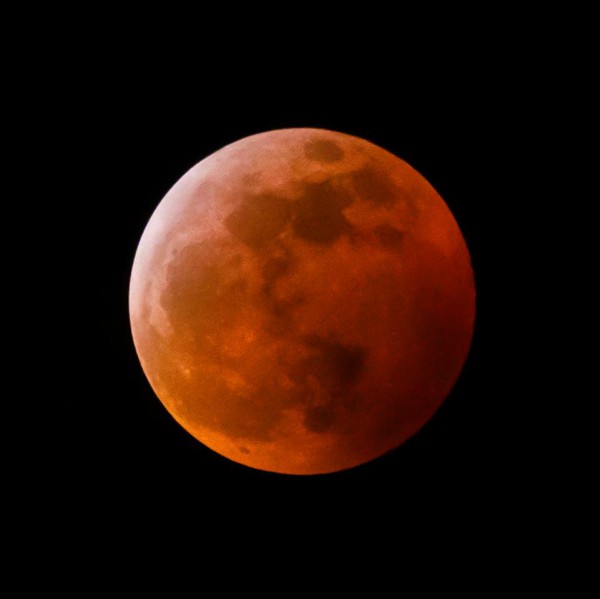
Photo courtesy of Mike Tedford/Jenks, Oklahoma

The “super blood wolf moon” is seen during a total lunar eclipse in Marseille, France, Jan. 21, 2019. REUTERS/Jean-Paul Pelissier
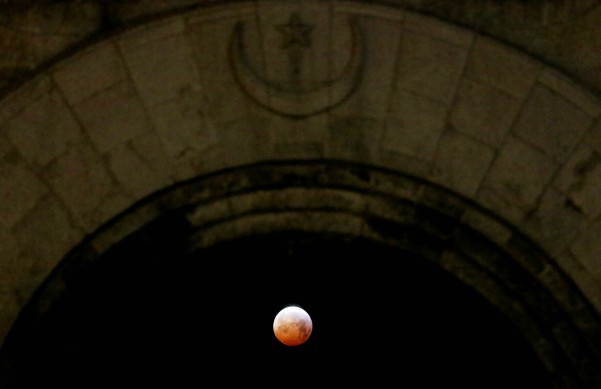
The “super blood wolf moon” is seen during a total lunar eclipse in Marseille, France, Jan. 21, 2019. REUTERS/Jean-Paul Pelissier
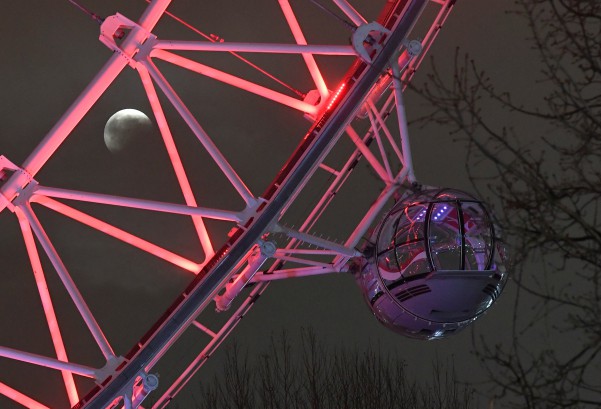
The “super blood wolf moon” is seen in partial eclipse in the skies behind the London Eye wheel in London, Britain, Jan. 21, 2019. REUTERS/Toby Melville

Decorative lights on trees mimic the moon’s shape during a lunar eclipse viewed at Seattle Center in Seattle, Washington, U.S. Jan. 20, 2019. REUTERS/Lindsey Wasson
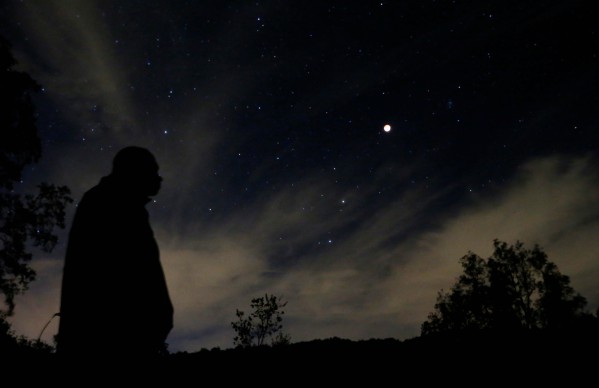
The “super blood wolf moon” is seen during a total lunar eclipse in Colliguay, Chile Jan. 21, 2019. REUTERS/Rodrigo Garrido

The “super blood wolf moon” is seen during a total lunar eclipse next to the headquarters of the European Central Bank in Frankfurt, Germany, Jan. 21, 2019. REUTERS/Kai Pfaffenbach
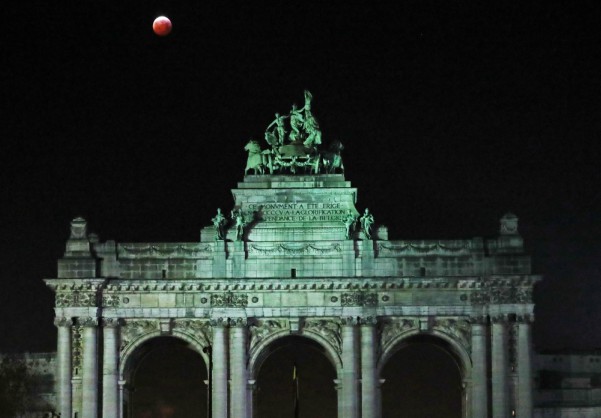
The moon is seen next to the arch of the Cinquantenaire during a total lunar eclipse, known as the “Super Blood Wolf Moon”, in Brussels, Belgium Jan. 21, 2019. REUTERS/Yves Herman
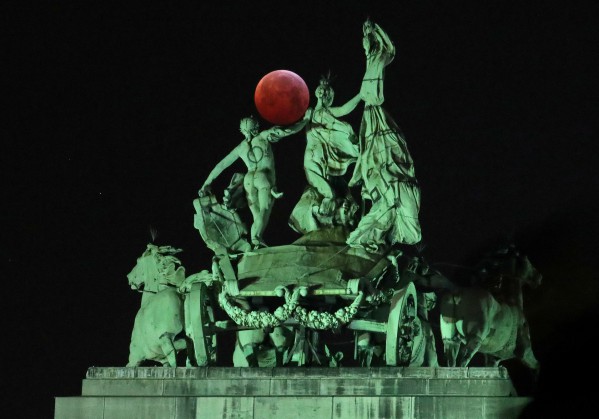
The moon is seen beside a quadriga on the top of the Cinquantenaire arch during a total lunar eclipse, known as the “Super Blood Wolf Moon”, in Brussels, Belgium Jan. 21, 2019. REUTERS/Yves Herman
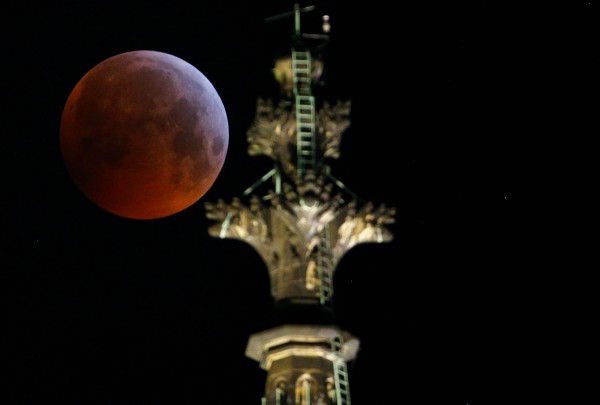
The “super blood wolf moon” is seen during a total lunar eclipse behind the Gothic cathedral in Cologne, Germany, Jan. 21, 2019. REUTERS/Thilo Schmuelgen

The “super blood wolf moon” is seen behind the Prague Castle during a lunar eclipse in Prague, Czech Republic, January 21, 2019. REUTERS/David W Cerny

The “super blood wolf moon” is seen during a lunar eclipse in Prague, Czech Republic, Jan. 21, 2019. REUTERS/David W Cerny
You can also listen to Biltz discuss the moon in this special episodes of the Greenelines podcast.














































